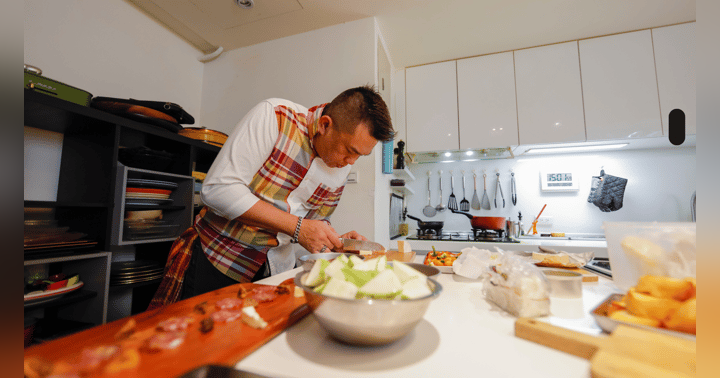Emerging Culinary Fusion Trends in the UK: 7 Tips to Embrace the Fusion Wave

The UK culinary landscape is evolving as customers seek new, multicultural flavours. A notable trend on the rise is fusion cuisine, especially the blend of Eastern European and British dishes, creating dynamic new flavours and experiences. As more people explore the depths of Eastern European cooking—think hearty Hungarian stews, Polish pierogi, and Russian-style salads—British restaurants have the chance to innovate and attract an adventurous, diverse customer base. Here’s how to incorporate these fusion trends and make your menu a standout.
1. Explore the Diversity of Eastern European Cuisine
From Romania’s ciorba (sour soup) to Poland’s zapiekanka (open-faced sandwich) and Ukraine’s comforting borscht, Eastern European cuisine offers depth and variety. With rich flavours and hearty ingredients, these dishes have broad appeal, particularly during the colder months in the UK. By learning the essence of each dish, you can creatively integrate these flavours into your menu.
Tip: Test adding a Polish twist to traditional British pies with fillings like sauerkraut or sausage. The Grocer reports a 12% rise in Eastern European cuisine popularity, indicating this trend is here to stay.
Learn more about food trends at The Grocer
2. Keep Ingredients Local and Seasonal
Local sourcing doesn’t just help with cost control; it also aligns with diners’ interest in sustainability. Since many Eastern European recipes feature vegetables like beetroots, carrots, and cabbages, you can keep things seasonal and sustainable while exploring this trend.
Tip: Create a British twist on Eastern European borscht by sourcing local beetroot and carrots. According to The Soil Association, 50% of UK diners value local sourcing—so this small touch can attract the eco-conscious crowd.
Soil Association insights on local sourcing
3. Experiment with Small Plates and Shared Dishes
For customers new to fusion cuisine, small plates offer a low-commitment introduction. Small plates or tapas-style servings encourage diners to try multiple dishes, experience new flavours, and come back for more. Sharing plates also fit well with fusion themes, allowing you to offer a variety of tastes without overwhelming diners.
Tip: Feature small fusion plates, like British charcuterie with Eastern European pickles or Russian-inspired salads. Research by BigHospitality shows 62% of customers enjoy sharing-style dining—perfect for sampling fusion creations.
Explore small plate trends with BigHospitality
4. Use Social Media to Build Curiosity and Hype
Today’s diners, especially younger ones, love to document and share their food experiences. Use social media platforms like Instagram to post visually appealing photos of fusion dishes. Storytelling is key here—add a quick background about the fusion concept to intrigue potential customers.
Tip: Share stories behind your dishes on Instagram, showing the inspiration and preparation. Hashtags like #FusionFood or #FoodTrend can increase visibility. Talking Hospitality’s blog provides ideas for using social media effectively in hospitality.
Marketing tips from Talking Hospitality
5. Educate and Excite Your Team About Fusion Dishes
When venturing into fusion, it’s crucial that your staff understands the background and preparation of each dish. This not only enhances service quality but also instills confidence in guests who may be trying unfamiliar flavours.
Tip: Provide staff with tasting sessions and brief training on each dish’s origin. Educating Hospitality offers courses to help teams understand and present diverse cuisines confidently. An informed team can make all the difference in the dining experience.
Discover training options on Educating Hospitality
6. Add a Creative Twist to British Classics
Fusion doesn’t mean abandoning traditional British fare; rather, it’s about creatively enhancing it. Adding Eastern European ingredients or preparation techniques to familiar British dishes can refresh the classics while giving diners a taste of something new.
Tip: For example, consider adding Eastern European spices or smoked meats to classic roasts or fish and chips. According to Mintel’s Food & Drink Report, dishes that combine familiar and novel elements tend to perform well, appealing to diners who are curious but cautious.
Mintel’s insights on food trends
7. Monitor Guest Feedback and Stay Adaptable
Experimenting with fusion requires adaptability. While some dishes will be a hit, others may need refinement. Encourage customer feedback to see which flavours resonate best and adjust accordingly. Honest feedback can guide you in refining the menu and enhancing the dining experience.
Tip: Use QR codes on receipts or feedback cards, making it easy for guests to share their thoughts. A survey by OpenTable found that 80% of diners appreciate when restaurants consider their feedback—an ideal way to build customer loyalty as you explore fusion.
OpenTable’s research on customer feedback
Tapping Into Fusion Trends for a Dynamic Menu
By experimenting with Eastern European flavours and blending them with British classics, you can create a distinctive dining experience that appeals to the UK’s multicultural clientele. Embrace this trend by exploring diverse dishes, locally sourcing ingredients, offering small plates, training your team, and adapting to customer feedback.
To dive deeper into culinary trends and get more training for your staff, Educating Hospitality offers specialised courses, and our Talking Hospitality blog provides insights and tips to keep your restaurant on the cutting edge. Fusion cuisine offers endless opportunities—tap into this trend and delight your guests with a menu that’s bold, inventive, and culturally rich.



